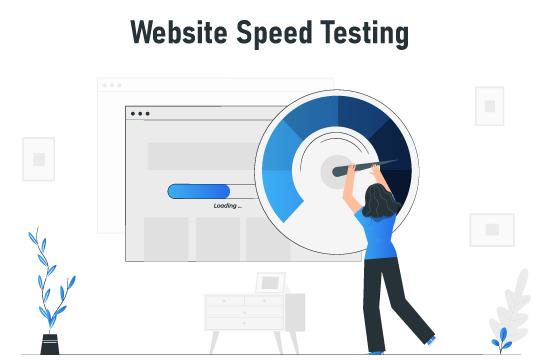SEO Audit Checklist | A FREE SEO Audit Guide
What is an SEO audit?
It is a crucial process that allows you to examine whether or not your existing digital footprint matches your goals. You need an audit to create a blueprint for your SEO journey with quantifiable results.
You need to identify as many gaps in your implementation as possible that may have an impact on organic search.
With that out of the way, here’s how to do an SEO audit.
You need the following tools for the task:
- Siteliner
- Chrome Extension: SEOquake
- Google Search Operators
- Google Search Console
- PageSpeed Insights
- Pingdom Tools
Do not worry. These tools are all free to use, so you do not spend money on anything.
Analysis of Your Website
Your SEO journey begins with your website.
It does not matter if you apply the best practices to your content. If your website does not have a solid foundation, your structure remains fragile. You need to make sure that customer experience is excellent when anyone visits your page.
A comprehensive way of doing a website analysis includes this SEO audit checklist:
1. Check for crawling issues and the version browser accessibility factors of your website.
2. Use an SEO analyzer tool and start doing a website crawl to gather structure and SEO setup information.
3. Use the Google Search Console’s Index Status to determine how many pages are accurately indexed to your domain.
4. Search the SERP to determine your website’s ranking status.
5. Perform a first manual check of some of your essential on-page organic search traffic.
6. Investigate and fix on-page issues via the established crawl report.
7. Check for possible duplicate or thin content affecting your website performance.
8. Check the load times of your site and individual pages.
9. Review and fix structured data errors.
10. Analyze your website’s organic search traffic.
The one mistake that companies make when creating a website is to think that everyone behaves as they do. After going through your website audit checklist, you also need to determine how your visitors are using your site.
- How do they access your website?
- How do they navigate once they are already on your page?
- What is their browsing pattern?
- Do they click on the links?
- How many minutes (or seconds) they spend on your website?
- What is the first landing page?
These are just some of the questions you need to address.
Google Search (Index Status)
One of the more significant additions that people think is criminally underutilized is the Index Status functionality in the Search Console. It was introduced in July of 2016.
The Index Status is a flexible tool that allows you to diagnose potential problems with indexation.
So, instead of the manual SEO audit, you can check for redirects, duplicate content, security threats, and canonicalization problems, among others.
The result is presented in a trending graphical format. All the indexed pages are displayed clearly, with corresponding peaks and valleys.
With one glance, you will immediately have an insight into whether your SEO campaign is working or not.
For example, if you are consistently writing blogs and articles, you may notice an increase over time, if you are using SEO best practices.
If, for one reason or the other, you failed to produce content for a week, you will observe a massive drop on the arrow. Cleaning your website of old, non-performing articles will also move the needle, but new content would eventually push it back up.
Content Analysis

There is a massive gap between a literary writer and a content writer. Of course, the latter also needs to have a solid foundation, such as flawless grammar, creativity, and the ability to tell a story.
However, the content writer must be familiar with SEO, as well.
But that is for another article.
A manual SEO audit includes analyzing your content and benchmarking them against your competitors and Google’s algorithms to reach your desired goals.
For instance, you explore the content on your website that ranked high on Google’s search engine results page (SERP). What did you do differently? What were the keywords used, and how were they used?
Analyzing the quality of content is vital to increase organic traffic. You need to have the following:
- The relevance of your content to your industry niche
- Its value to the audience
- The number of credible websites linking back to your content
As such, a good foundation for a website ranking starts with having quality content.
Fortunately, there are now tools to automate this process. You can use these content analysis products to gauge your overall SEO score.
Identify Penalties
You may already have been languishing in Google’s jailhouse, and not be aware of it. Yes, you may notice a sudden decline in organic traffic, but it could be anything.
The only thing to know for sure is to do a technical SEO audit, using the Google Search Console.
It is a diagnostic tool to determine a specific issue on your website that could affect your ranking.
Take using duplicate content, for instance.
Duplicate content does not mean two similar blogs on different pages or dates on your website. That happens more than you think.
Duplicate content can also refer to sidebars, footers, or multiple domains.
Google would not penalize you for the infraction.
However, if you are trying to flood your website with duplicate content to funnel traffic to your pages and climb on top of the SERP, then you have a problem.
When you use the Google Search Console, you will likely find the following message (and we are paraphrasing to avoid being flagged):
“We will make the necessary adjustments on the ranking and indexing your website. As such, the ranking of your website will be affected. Your website may even be scrubbed clean from the Google Index, which means it will no longer show up in the search results.”
You can perform an advanced technical SEO audit to spot duplicate content. Or you can also use third-party duplicate content checkers.
Among the tools you can use for the task are:
The other ways to avoid being penalized by Google are:
· Make sure your website does not contain viruses, adware, or spyware.
· Your website must not contain hidden texts or links.
· Do not include cloaking or spamdexing techniques in any of your SEO campaigns.
· There should be no deceptive redirects on your website.
· Keyword stuffing should be avoided.
· No duplicate content must be present on your site’s pages.
· Your site should not be loaded with non-related or irrelevant keywords.
On-page Analysis

On-page analysis refers to the quantifiable elements within your website that can be used to boost your SERP position.
If you have an article, for instance, that resonates well with your visitors but is not ranking high on Google search, it points to bad SEO.
Boosting the title tags, meta descriptions, and updating keywords should address the problem.
With that said, you should always pay close attention to the following:
- Meta Descriptions
- Page Titles
- Internal Links
- Images (Alt Text, Size)
- Canonical Tag
- H1, H2, H3 Headings
One handy tool to use is the SEOquake, which is a free Chrome extension.
Website Speed Testing

If your website takes time to load, people will leave.
That is not a threat, but a fact. Even Google agrees.
In 2017, the search giant ran an experiment using a deep neural network. Google then fed the system with voluminous data on conversions and bounce rates.
The bounce rate measures the time visitors spend on a single page before leaving your website without clicking on the other pages.
Nevertheless, here is what Google found:
- If your site loads from 1-3 seconds, the bounce rate increases to 32%
- If your site loads from 1-5 seconds, the bounce rate increases to 90%
- If your site loads from 1-10 seconds, the bounce rate will reach 123%
Should it be added that if your website loads for 10 seconds, the probability of those visitors not returning would be 1,000%?
No, that is not Google’s deep neural network. It is plain common sense.
Some of the factors that will impact your website’s performance include:
- Your website host
- Internet connection
- File sizes and types
- CSS and Javascript use
- Poor coding
Use Google’s PageSpeed Insights to check your website’s speed.
You can also use other analyzer and optimizer tools, which would list down potential problems with your site.
At the very least, each page should not be more than 3 MB. Any more than that and your website loading speed will drastically slow down.
With the list of tools available today, you do not have to spend a lot of time going through your SEO audit checklist. It requires as little as 30 minutes of your time. If you’re a local agency that wants to monitor lots of accounts, use our propietary tool: Trackright — the number one AgencyAnalytics alternative.
Table of Contents
Related Articles
Dominate Your Market with Digital Marketing Services That Deliver
Talk to a certified professional today, and we will design a strategy specific to your case.






